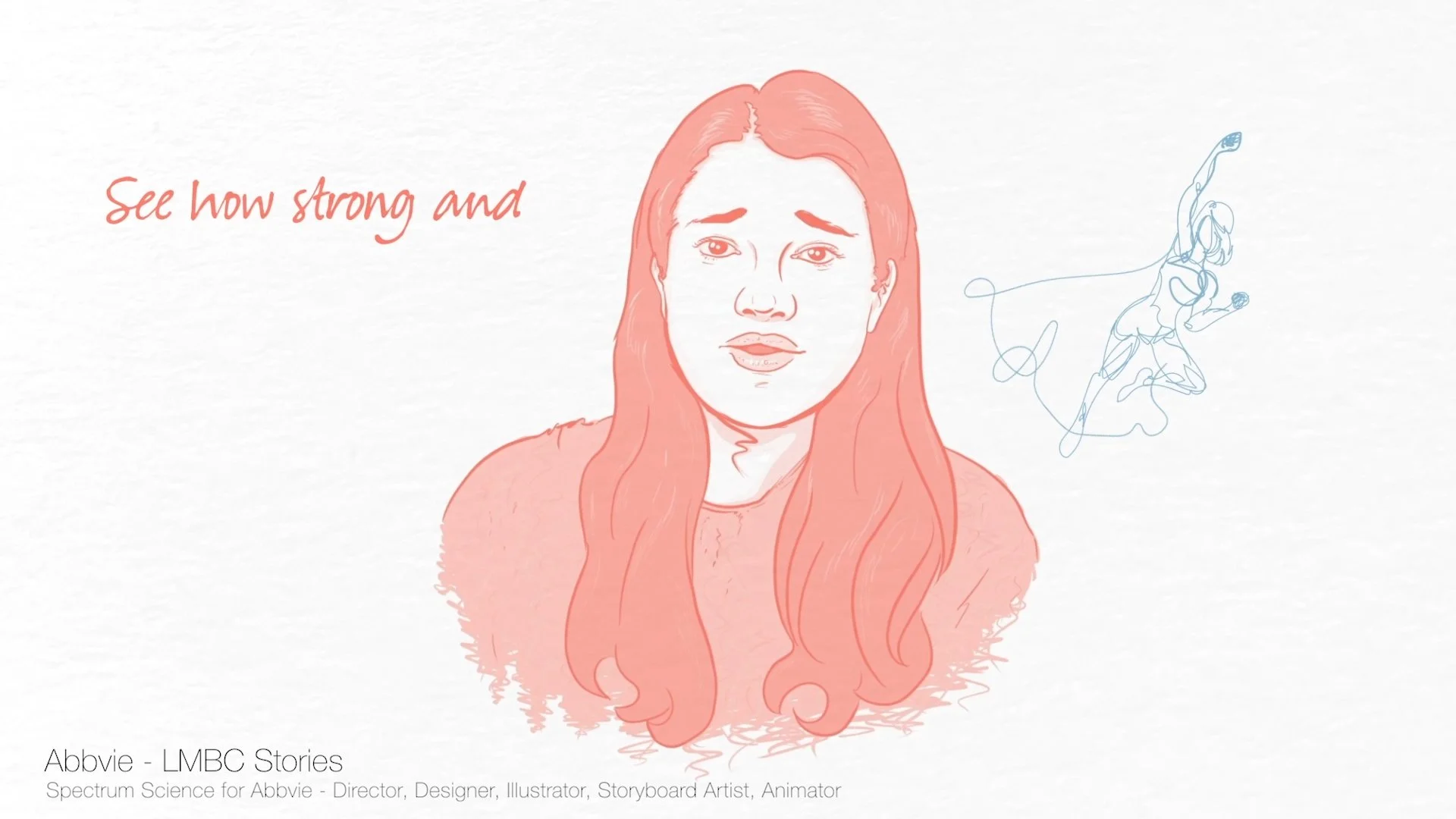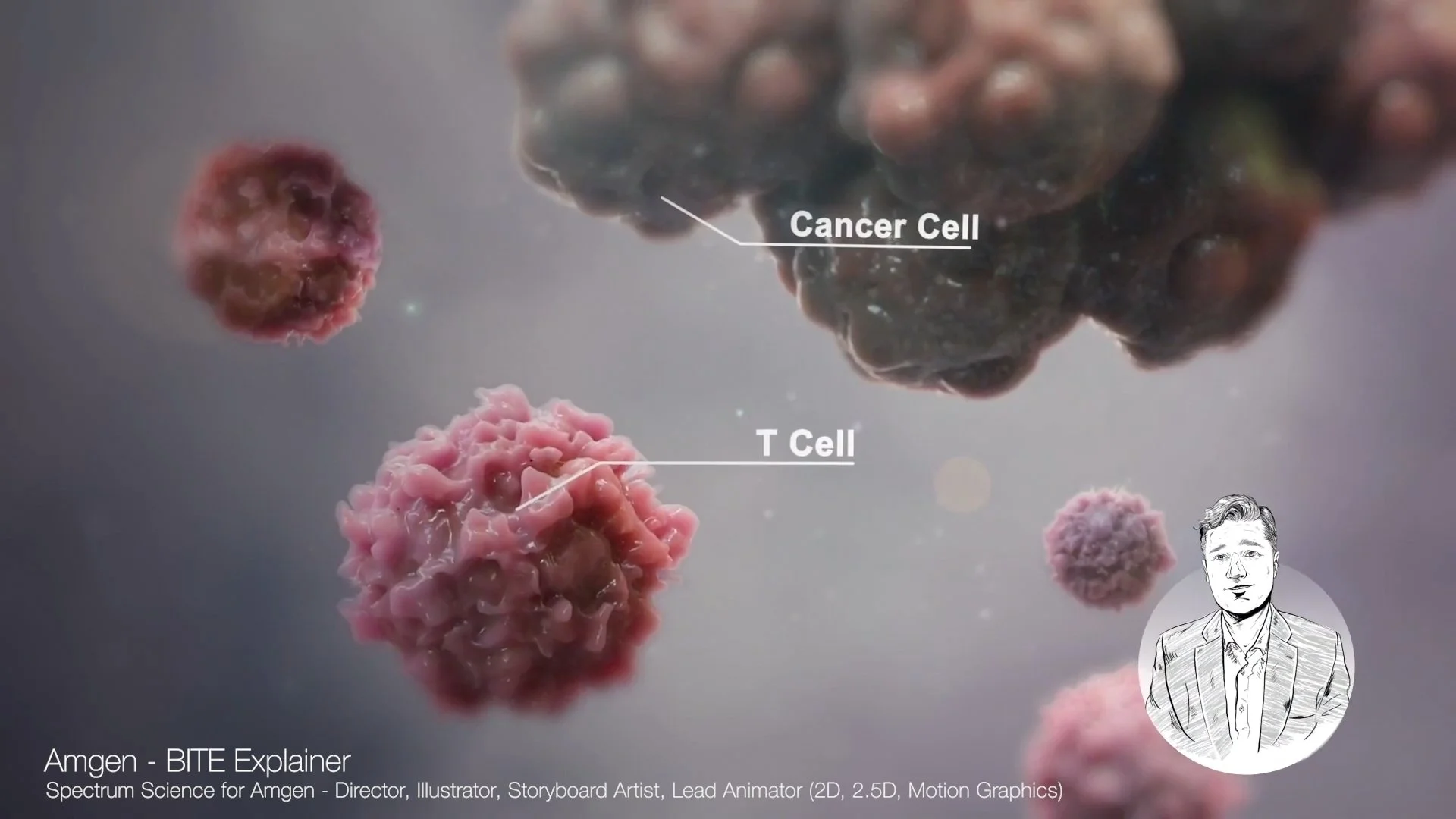SPECTARS
SPECTARS
CASE STUDY 003 - MOTION DESIGN PRODUCT OFFERING - SPECTRUM SCIENCE COMMUNICATIONS
What was the need?
The project began with this question: How do we make more adaptable video and motion content more quickly in the healthcare and science space?
Having been hired to start the internal video, animation, and motion design department of the company, I was tasked with many challenges, chief among them being the desire for more motion design offerings, remote production options, and solving the issues of health science KOLs, patient spokespeople, and executives often not being the most comfortable in or available for shoots. This is where Spectars were born.
What was the role?
I was the lead visual designer, art director, producer, developer, production manager, and animator for the offering, including everything from pricing and workflow design to sales messaging, and I was the animation, art and motion direction lead on the vast majority of resulting projects sold and created from the offering.
What did we make?
A new motion capture animated avatar product, offering for the business, including:
Over 9 offered base styles.
3 tiers of pricing and complexity ranging from $30,000 to $50,000 per character.
Pipeline and extended use plans for the product, including integration into other projects and initiatives, derivative content plans, and timelines.
complete copy and art pitch deck and plan for the product.
Alternate branding for our international affiliate companies (PRsona)
Remote production methods and solutions adapted and built beyond this product to other company offerings.
What were the tools?
The research and development of this offering were based on my utilization of the then-nascent Adobe Character Animator, one of the first-to-market live 2D animation and performance capture programs and already part of our standard Adobe CC package. Other art and assets were created in:
Adobe Illustrator
Adobe Photoshop
Procreate
Adobe After Effects.
How did it happen?
Ideation and Concepting
Knowing that new desktop performance capture options were arriving to market and that we already had one of the lead examples, Adobe Character Animator, in our arsenal, I moved to exploit the lack of knowledge and use that the program then had within the industry, and particularly within our market vertical. We had the opportunity not just to get two birds with one stone, but to metaphorically concuss an entire flock with a boulder.
First, we needed more offerings for video in general, but for animation and motion design in particular. Second, we needed to create options for people with limited time and a lack of comfort on caskets and other options for video participation. This product offered both these and more, including the ability to quickly create more videos from existing puppet rigs, integration with other animation styles and videos, and even options for live animation creation.
Production and Execution
As Spectars were a new product offering, I worked with our project management team to assemble the deck, the workflow pipeline, the sales pitch, and pricing. I also created test models, internal videos, and a visual catalogue of original illustrations to complete our pitch deck and reach a minimum viable product. Then, after internal testing, we started selling to our clients, both existing and prospective, where we obtained major success very quickly.
Results
Since launching in late 2018, Spectars have been a massive success, used on over 24 projects and initiatives, including new and or expanded work for multiple Fortune 500 companies, including Amgen, Abbvie, Vertex, and Regeneron. It also built the foundation for further remote production and animation offerings gaining business with other major clients such as Moderna, BMS, Boehringer Ingelheim, and Takeda Pharmaceuticals.
Our first projects, for Amgen and Abbvie, saw over 22,000 views and 279,000 views across social platforms respectively, and led to multiple additional projects with the offering for both clients.
Takeaways
Through this initiative I gained increased skills in building product offerings, leveraging new software technologies for faster and more diverse production options, and pipeline planning and building. Additionally, it allowed me to be at the forefront of developing remote production solutions and technology, which became and now remains essential in the post-pandemic paradigm.















